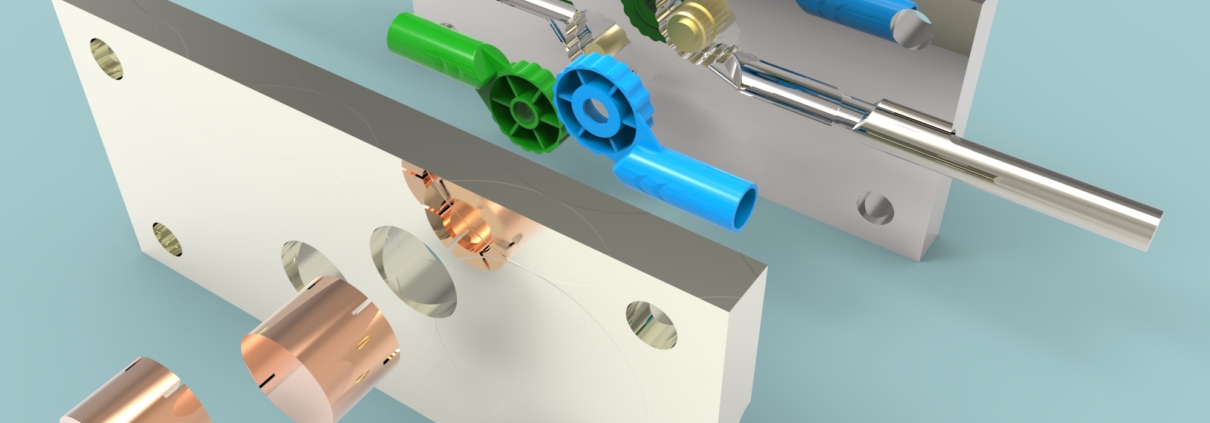You probably do not realize the impact that the invention of plastic has had in your life. In just 60 short years, plastics’ popularity has grown considerably. This is largely due to just a few reasons. They can be easily molded into a wide range of products, and they offer benefits that other materials do not.
Simplexity uses a phase-gate process, based on decades of experience and industry best practices, to guide its product development. Design is an iterative process, whereby unknowns and high-risk areas are best resolved through exploration, building prototypes, analysis, and testing as early as possible.
The Phases of Product Development
Our approach is to figure out what the highest risk aspect of a product may be and devise effective ways of assessing those risks, usually through different levels of prototyping and analyses.

Phase 0 is an optional phase for those projects where the technical feasibility of the idea has not yet been fully proven. It can consist of research, concept work, exploring initial architecture, performing feasibility studies, and basic prototyping and testing.
Typical deliverables:
- Exploration report
Gate definition:
- Client approval on feasibility of idea
The market and user requirements are converted into engineering requirements for the product. The project is planned based on the schedule, budget, risk, and technical requirements. This process is best done in a collaborative team effort with the client, who usually has the most intimate knowledge of the market need and user requirements.
Typical deliverables:
- Product requirements document
- Project development plan (including plans for software/firmware, usability, and hardware)
- Risk analysis
- ID/UI concepts
Gate definition:
- Product requirements document complete
- Client approval of project development plan
The detailed design phase starts with defining various options for the product architecture, with the goal of having the greatest chance of success while best mitigating inherent risks. Mechanical engineering activities in this phase could include presenting options for hardware components, creating rough CAD, and building proof-of-concept prototypes. Common electrical and firmware engineering tasks include outlining the system block, sequence, and state diagrams, as well as breadboarding of high-risk subsystems. Results are presented with a description of the pros, cons, and key tradeoffs for each scenario.
Typical deliverables:
- System architecture description (including software/firmware and hardware)
- User studies
- Software requirements
- Preliminary mechanical architecture
- Software risk analysis
- Breadboards or proof-of-concept prototypes
- ID concept models
Gate definition:
- Client approval on hardware and software architecture reviews
Phases 2B and 2C are typically the largest effort in the product development process, where the specific implementation for all disciplines occurs (mechanical, industrial design, electrical, firmware, control system, software, manufacturing, and quality). The detailed design phase usually has multiple, iterative sub-phases as the design progresses and more representative prototypes are built and tested.
We typically engage with production component suppliers and contract manufacturing groups early in this phase to inform the design. If the product has stringent testing or certification requirements, pre-screens are often performed in this phase prior to formal safety agency testing. The number of detailed design sub-phases depends on the complexity and performance requirements of the product.
Typical deliverables:
- Prototypes (from rapid-prototypes to production-representative)
- User studies
- Software and hardware design descriptions
- Design-build-test iterations
- Software source code
- Schematics
- 3D CAD files
- 2D drawings
- Test protocols and reports
- Design failure mode and effect analysis
- Bill of materials
- Test plans
Gate definition:
- Engineering confidence test reviews (unit or integration tests)
This phase occurs once the detailed design is complete, and prototypes are built with manufacturing-representative quality and detail. More extensive, formal testing is performed, such as life, reliability, safety, environmental, drop, and vibration.
The design team works closely with the manufacturing team to enable a smooth transfer, often with Simplexity engineers traveling to the contract manufacturer sites to ensure product quality. The design is transferred to the client based upon specific needs, most often after all tests are complete and the design is verified.
Typical deliverables:
- Formal verification test reports
- Design transfer package, including Design History File (DHF) if needed for FDA submittal
Gate definition:
- Design verification complete
The Simplexity team can be as involved or uninvolved in the production phase as requested by our clients. For clients with internal manufacturing or established relationships with contract manufacturers, our engineers are available to ensure quality is maintained and provide ongoing engineering support as needed.
For clients without a manufacturing solution, Simplexity has a dedicated New Product Introduction (NPI) team that can guide the product from concept through production. We perform the builds that make sense from a quantity and capacity standpoint in-house and have established relationships with contract manufacturing partners for products that are better suited to be built externally, or overseas.





Leave a Reply
Want to join the discussion?Feel free to contribute!